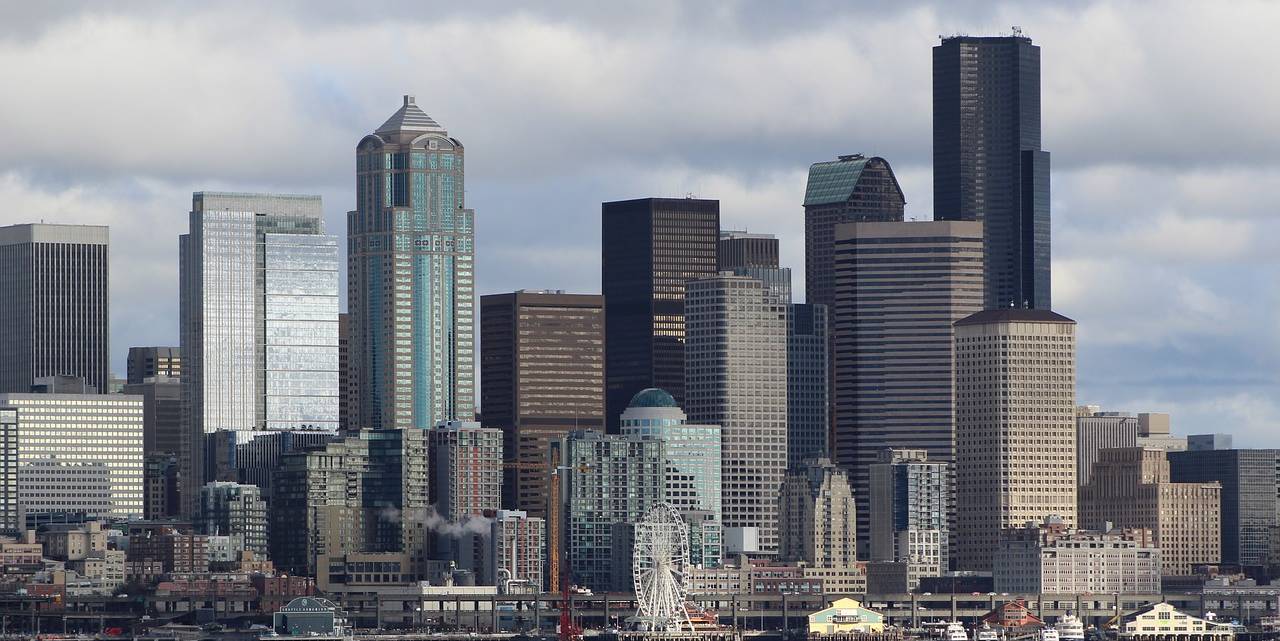

The Indexer highlighted some recent results from the American Community Survey (ACS) showing that the Seattle area is making slow but steady progress toward its longstanding goals of making the region more “urban.” The two metrics we looked at were the degree to which households are shifting from single family housing to multifamily housing, and the degree to which commuters are shifting away from driving alone. In both cases, the percentage shifts were in the low single digits for the past decade.
Since passage of the Growth Management Act (GMA) in 1990 the state and region have been in the forefront of what came to be know as the Smart Growth movement that sought to shift growth patterns away from the dominant post-World War II model. If we have been leaders, do we have any followers? To what degree have other regions embraced the kind of urbanism that the GMA envisioned?
Using the same 2019 ACS data we can look at the same metrics for growth, housing type and commutes, for other metro areas. Let’s start with housing type. Across the country, 61 percent of households live in single family detached homes, and the largest metro areas range from a low of 35 percent single family in New York to a high of 70 percent in Detroit. Figure 1 show the change in that percentage for the 25 largest metro areas.

The Seattle metro area, with a drop of nearly 3 percent in single family share (from 60 percent to 57 percent) leads this shift by a good measure. Nationally, the shift has been only 0.12 percent, or about 175,000 households out of 140 million. Most of the metro areas saw some shift toward multi-family housing, but a few actually saw increases. That mirrors the experience in the Seattle area, where there has been a significant shift toward multi-family in King County and a shift toward single family in Pierce and Snohomish counties.
A second metric of urban intensity is the degree to which people commute in ways other than driving by themselves in a car. The data give us two ways to look at this. Figure 2 shows the change in the share of commuters who drive to work alone. Nationally, 76 percent of commuters drive alone, and this group of metro areas range from 49 percent of New York commuters driving alone to 84 percent of commuters in St. Louis.

Here Seattle has the third highest drop in the share of solo car commuters (from 71 percent to 67 percent), after San Francisco (drop from 62 percent to 57 percent) and Orlando (drop from 84 percent to 78 percent). Nationally, solo car commuting dropped slightly less than 1 percent, from 77 percent to 76 percent over the decade.
The holy grail of the urbanist movement is to move away from car ownership entirely. Cut emissions, save all that space used for parking and have people orient their habits around transit, walking, biking and the occasional car share or rental. Figure 3 shows the change in the share of commuters who do not have a car available to them for their commute (there may be cars in the household, but they cannot use them to commute).

Again, Seattle leads the way, with a one percent increase in the number of car-less commuters (from 4.6 percent to 3.6 percent) over the decade. But nationally, the number of commuters without access to a car actually dropped, from 4.4 percent in 2010 to 4.3 percent in 2019. So although solo commuting is dropping a bit, people are not giving up car ownership altogether. (Note that for the regions in the middle of the graph the changes are of questionable statistical significance, given the margin of error.)
Across these three metrics Seattle is clearly leading the way toward the more dense, less auto-dependent future that urbanists have been promoting. But it does not appear that the other large metro areas are exactly bursting with enthusiasm for these changes. There are some shifts, but at the current rate, our cities will not look much different in 100 years. And the large metro areas are where the changes should be occurring first, given their more developed transit infrastructure and their amenities that make dense living attractive.
The very slow shifts away from the standard development patterns of the past 75 years indicate that household preferences and market forces are pretty dug in. Billions of dollars have been spent on transit systems and urban redevelopment, but these investments have not resulted in large aggregate changes. The individual successful transit systems and the impressive examples of urban revitalization do not seem to have added up to a major shift in household settlement and behavioral patterns.
Looking Ahead
As discussed several times in the Indexer, the incentives and disincentives brought on by the pandemic are working against efforts to increase urbanization. And the arrival, finally, of the huge millennial generation into the years of family life suggest that lower density living will continue to be popular in the marketplace.
Pushing back in the direction of urbanism will be efforts to reduce energy use to combat climate change. Pre-pandemic, there seemed to be some promising initiatives to make large scale changes in land use to promote urbanism. We will see if, in the coming decade, the promoters of urbanism can regain the initiative and get stronger results than we have seen in the past decade.
Discover more from Post Alley
Subscribe to get the latest posts sent to your email.

Thanks for writing a fair and balanced article with plenty of information included!